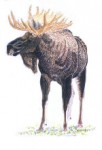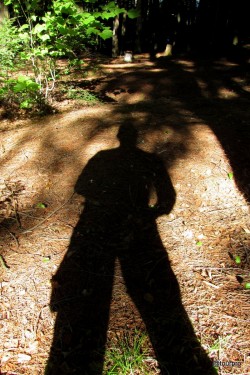 Motorists should be alert for moose on roadways in the Adirondacks and surrounding areas at this time of year – a peak of moose activity – warns the New York State Department of Environmental Conservation (DEC).
Motorists should be alert for moose on roadways in the Adirondacks and surrounding areas at this time of year – a peak of moose activity – warns the New York State Department of Environmental Conservation (DEC).
Early fall is the breeding season for moose in northern New York. During this time moose are wandering looking for mates, leading them to areas where they are not typically seen. While this improves the opportunities for people to enjoy sighting of a moose, it also increases the danger of colliding with one on the roadway.
 Moose are much larger and taller than deer. Their large body causes greater damage, and, when struck, their height often causes them to impact the windshield of a car or pickup truck, not just the front of the vehicle. Last year ten moose vehicle accidents were reported in New York. However, there has not been a human fatality from an accident with a moose, a record DEC hopes to retain.
Moose are much larger and taller than deer. Their large body causes greater damage, and, when struck, their height often causes them to impact the windshield of a car or pickup truck, not just the front of the vehicle. Last year ten moose vehicle accidents were reported in New York. However, there has not been a human fatality from an accident with a moose, a record DEC hopes to retain.
Moose are most active at dawn and dusk, which are times of poor visibility. Moose are especially difficult to see at night because of their dark brown to black coloring and their height – which puts their head and much of their body above vehicle headlights.
DEC advises motorists to take the following precautions to prevent moose vehicle collisions:
- Use extreme caution when driving at dawn or dusk, especially during September and October;
- Reduce your speed, stay alert, and watch the roadsides;
- Slow down when approaching moose standing near the roadside, as they may bolt at the last minute when a car comes closer, often running into the road;
- Moose may travel in pairs or small groups, so if a moose is spotted crossing the road, be alert for others that may follow;
- Make sure all vehicle occupants wear seatbelts and children are properly restrained in child safety seats;
- Use flashers or a headlight signal to warn other drivers when moose are spotted near the road;
- Motorcyclists should be especially alert for moose;
- If a moose does run in front of your vehicle, brake firmly but do not swerve. Swerving can cause a vehicle-vehicle collision or cause the vehicle to hit a fixed object such as a tree or pole;
- If a moose is hit and killed by a vehicle, the motorist should not remove the animal unless a permit is obtained from the investigating officer at the scene of the accident.
More information about moose can be found on the DEC website.

 New this year, DEC has also expanded bear hunting in northern New York to include WMUs 6A, 6G, 6K and 6N. In these newly opened units, bear hunting begins with bowhunting equipment only from September 13 through October 17. In the rest of northern New York (WMUs 5A, 5C, 5F, 5G, 5H, 5J, 6C, 6F, 6H, and 6J), the early firearms season begins Saturday, September 13 and continues until October 17. Muzzleloader season then opens in all northern WMUs on October 18, followed by the regular firearms season for bear on October 25.
New this year, DEC has also expanded bear hunting in northern New York to include WMUs 6A, 6G, 6K and 6N. In these newly opened units, bear hunting begins with bowhunting equipment only from September 13 through October 17. In the rest of northern New York (WMUs 5A, 5C, 5F, 5G, 5H, 5J, 6C, 6F, 6H, and 6J), the early firearms season begins Saturday, September 13 and continues until October 17. Muzzleloader season then opens in all northern WMUs on October 18, followed by the regular firearms season for bear on October 25.


